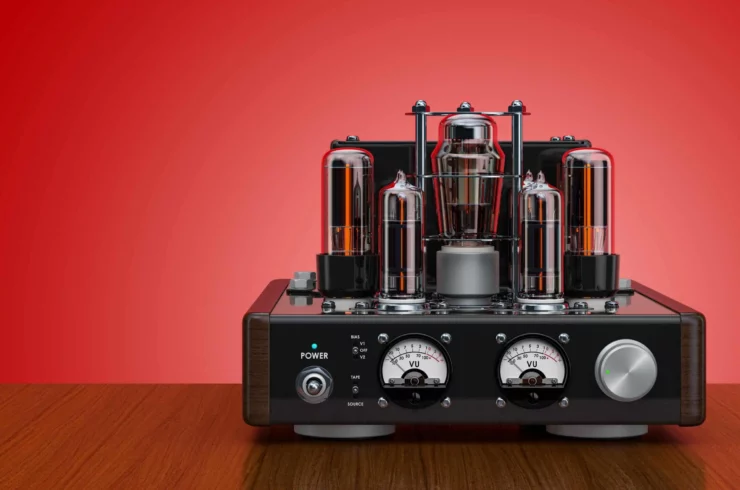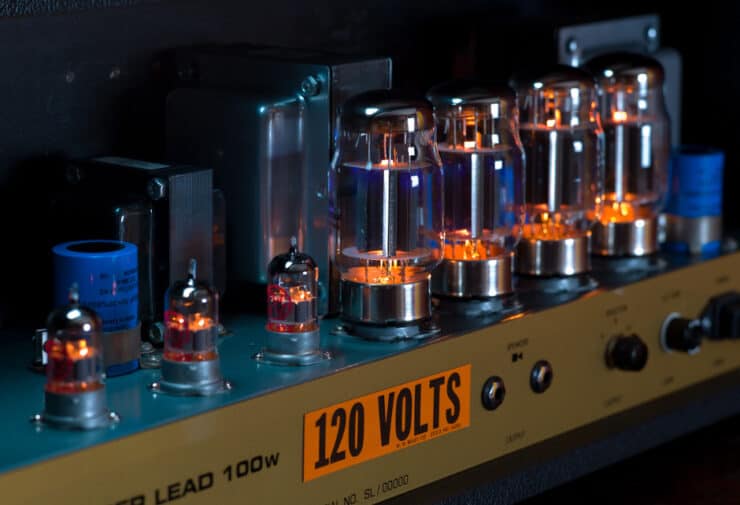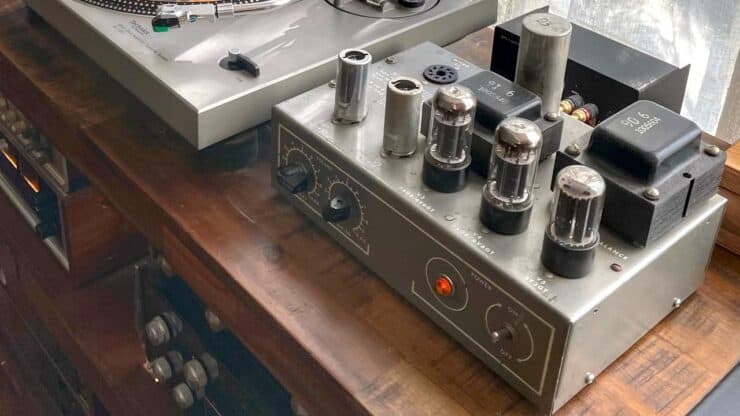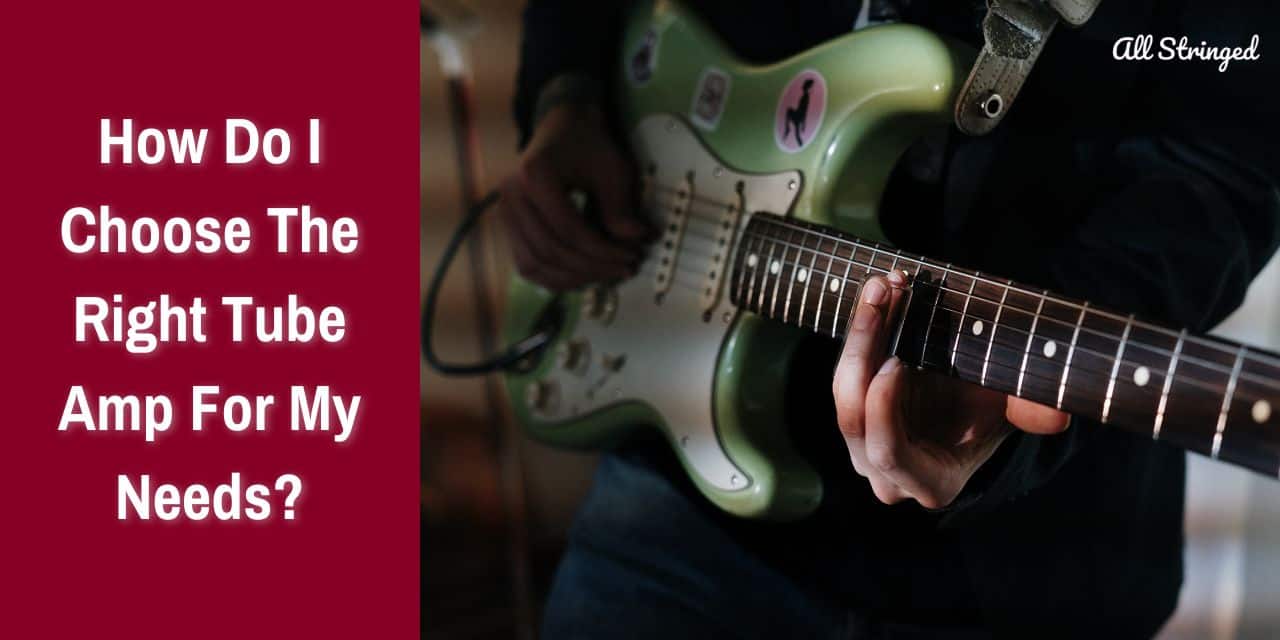Are you a guitar player looking to find the right tube amp to fit your needs? If so, you’ve come to the right place! This article will provide a comprehensive guide to help you choose the perfect tube amp for your specific needs. From understanding the basics of tube amps to exploring the various features and benefits, you’ll have the knowledge to make an informed decision by the end of this article. So, let’s get started!
How do I choose the right Tube Amp for my needs?
When it comes to guitar amplification, tube amps have long been revered for their warm, rich tones and responsive dynamics. Whether you are a beginner or a seasoned guitarist, choosing the right tube amp will require careful consideration of different factors. These factors will help you ensure the amp meets your specific needs and preferences. Here are some of the primary reasons that you need to consider, as they will help you choose the right Tube Amp for your needs.
>>> Click here to read our review about the Top 15 Best Tube Amps <<<

#1. Power rating
The power rating of a tube amp will refer to the amount of power it can deliver. Higher wattage amps will generally offer more headroom and clean volume. These amps are suitable for larger venues and genres that need pristine cleans. Meanwhile, lower wattage amps tend to produce earlier breakups and saturation, providing a desirable overdriven tone at lower volume levels. You need to consider your playing style, venue size, and performance requirements for determining the ideal power rating for your needs.
#2. Speaker size and configuration
The speaker size of a tube amp will significantly impact its tone and projection. Smaller speakers like 8 or 10 inches emphasize midrange frequencies and can offer a focused, punchy sound that is ideal for recording or practice sessions. Larger speakers, like 12 inches, will offer a fuller low-end response, enhanced bass frequencies, and increased volume.
The speaker configuration will also affect the sound and frequency response. Single-speaker setups like 1×10” or 1×12” cabinets will offer focused and direct sound projection. Meanwhile, multiple-speaker setups, like 2×12” or 4×12” cabinets will offer increased volume, wider dispersion, and a more expansive sound. You need to consider the size of the venue you will be performing in, the desired tone, and portability requirements for choosing the appropriate speaker configuration for the tube amp.
#3. Tone controls
Tone controls play an important role in playing your sound and allowing you to easily fine-tune your amp’s response. Different tube amps offer varying configurations of tone controls, such as bass, treble, middle, presence, and contour knobs. You must experiment with different amp models for finding a tonal palette that suits your playing style and genre preferences. Additionally, you must consider whether the amp offers a versatile EQ section that allows you to dial in your desired tone with precision.
#4. Effects
Tube amps feature built-in effects, including reverb, delay, tremolo, and more. These onboard effects can provide convenience and help you achieve certain sonic textures without having to rely on external pedals. However, if you prefer to use your own effects pedals or have specific processing needs, you might go for a tube amp with a straightforward, effects-free design. You must evaluate whether the tube amp’s built-in effects align with the sonic requirements, or if they complement your existing pedal board setup.
#5. Connectivity
Tube amps also come with various connectivity options that cater to different performance scenarios. You need to consider different connectivity features like input/output options, direct recording, and foot switch compatibility.
You need to look for an amp that comes with multiple inputs to accommodate different instruments or signal sources. Moreover, you must make sure that the amp provides speaker outputs, line outputs, and effects loops if required for external gear integration.
If recording is a priority, a tube amp with a direct recording output like a speaker-emulated line output or a built-in USB interface can streamline the recording process by capturing the amp’s tone directly.
Check if the amp is compatible with foot switches or external controllers for remote control over channel switching, effects activation, or other functions.
#6. Reliability and built quality
Tube amps are significant investments, and it is essential to choose one that is built to last a long time. You need to consider the build quality and reliability of the amp, paying close attention to the materials used, craftsmanship, and the overall reputation of the manufacturer. You must read customer reviews and seek recommendations from experienced musicians to gain valuable insights into the reliability and longevity of the tube amp you are considering.
#7. Budget considerations
There are several high-profile brands that sell tube amps like Fender, Boss, etc. and they come in a wide range of price points. You need to set a budget that aligns with your financial capabilities and prioritize the factors that are most important to you. Keep in mind that a higher price tag does not necessarily guarantee a better amp. You need to carefully assess the features, tonal qualities, and build quality offered within your budget range.
Different types of Tube Amps
Tube amps have been cherished by musicians for their amazing tonal qualities and dynamic response. Within the world of tube amps, there are different classes of operation that define their circuit designs and characteristics. Once you have a basic idea of the different types of tube amps and their advantages and disadvantages, you’ll be in a better place to make a well-informed decision.
#1. Classic A tube amps
Class A tube amps are known for their simplicity and pure, lush tones. With a Class A design, the output tubes will be biased such that they are always conducting and responsible for the entire audio waveform. The biasing scheme will ensure that the tubes are continuously amplifying the signal, resulting in a smooth and rich sound.
Some of the advantages of Class A tube amps are –
- Warm and smooth tonal characteristics
- Dynamic response and touch-sensitive feel
- Even-order harmonic distortion that gives pleasing overtones
- Give lower power output, suited for studio recording and smaller venues
- Simplicity in design, resulting in fewer components and a purer signal path
Some of the disadvantages of Class A tube amps are –
- They’re slightly inefficient as the tubes draw a constant amount of power even when not playing
- Capable of generating more heat because of continuous operation
- Generate more heat due to continuous operation
- Lower power output compared to Class D or Class AB designs
#2. Class AB tube amps
Class AB tube amps aim to combine the tonal qualities of class A amps with improved efficiency. In a Class AB design, the output tubes will come biased to operate in a balanced state between Class A and Class B. This means that each tube will be able to conduct a portion of the audio waveform, resulting in better efficiency without sacrificing too much tonal purity.
Some of the disadvantages of Class AB tube amps are –
- Improved efficiency in comparison to Class A amps
- Retains the warmth and harmonic richness of Class A designs
- Higher power output makes them ideal for live performances
- Capable of handling a variety of playing styles and music genres
Some of the disadvantages of Class A tube amps are –
- Slightly pure tonal characteristics in comparison to Class A amps
- Might have a slightly stiffer or less touch-sensitive response compared to Class A designs
- More complex circuit design and more components
#3. Class D tube amps
Class D tube amps or also known as digital or switching amplifiers differ significantly from Class A and Class AB designs. Instead of using tubes for amplification, Class D amps utilize switching transistors for converting the audio signal into a high-frequency pulse-width modulated signal. This PWM signal will then be filtered and amplified to reproduce the audio signal.
Some of the advantages of Class D tube amps are –
- High efficiency, which results in less power consumption and cooler operation
- Lightweight and compact design
- Can offer clean, tight, and accurate sound reproduction
- High-power output, which makes them suitable for large venues and outdoor performances
- Can incorporate features like built-in digital effects, modeling, and advanced connectivity options
Some of the disadvantages of Class D tube amps are –
- Less traditional tube amp warmth and harmonic richness
- Limited availability of Class D tube amps compared to Class A and Class AB counterparts
- Some Class D amps might exhibit a sterile or digital character in their sound
How to test a tube amp?
Choosing the right tube amp will be a significant decision for any musician or guitarist, as it greatly influences your tone and overall playing experience. Testing the tube amp is an important step in finding the perfect match for your musical needs. Whether you are a seasoned guitarist or a beginner, understanding how to evaluate a tube amp will help you make a better decision. Reviews and online verdicts can only take you so far. When making a costly investment, firsthand experience and testing will help you better assess the amp’s suitability. Here is how you should test a tube amp.

#1. Listen to sound samples
Sound samples are a great way of evaluating tube amps, especially when you cannot test them in person. There are many manufacturers and music gear retailers that provide sound samples and demos on their sites or through video-sharing platforms. You must listen to different recordings of the amp that you are interested in, paying attention to different playing styles, genres, and settings. This will give you a greater sense of the amp’s tonal versatility and whether it aligns with your musical preferences.
You must look for recordings or performances by professional musicians who use the same tube amp model you are considering. Artists do not mind showcasing their preferred gear on recordings, live performances, or interviews. Analyzing how the amp sounds in the hands of skilled musicians will offer valuable insights into its capabilities and tonal characteristics.
You can also explore online communities, forums, and social media platforms where musicians discuss their experience with specific tube amps. Look out for recordings or videos posted by fellow guitarists who have tried the amp you are interested in. This user-generated content can offer a more authentic and unbiased representation of the amp’s sonic qualities.
#2. Evaluate the amp in person
While sound samples certainly provide a good initial impression, you must remember that they might not capture the amp’s full range or nuances. Therefore, it’ll be smart if you test the amp in person whenever possible. Testing the tube amp in person will allow you to experience its tone, responsiveness, and overall feel. Here are some of the key considerations when evaluating an amp in person.
You can visit local music stores or attend gear exhibitions, where you’ll be able to find a variety of tube amps to try out. You must play the amp using your own guitar or a similar instrument and experiment with different settings to explore its sonic capabilities. Furthermore, you must pay close attention to how it responds to your playing dynamics, the touch sensitivity, and the tonal range across various settings.
If you have a specific set of pedals or effects that you can use, bring them along when testing the amp. This will help you gauge how the tube amp interacts with your preferred gear and whether it complements your existing setup.
You must be aware that the testing environment might differ from your intended playing environment. Factors like room acoustics and ambient noise might influence your perception of the amp’s sound. If possible, you should try the amp in different settings to get a more comprehensive understanding of its performance.
#3. Assess the sound quality and tonal characteristics
Set the amp to a clean or low-gain setting. Play various chords and single-note passages across the fretboard, focusing on the clarity, definition, and warmth of the sound. Pay attention to note separation, harmonic richness, and overall tonal balance.
Gradually, you should increase the gain or distortion settings on the amp to evaluate its overdriven tones. Play different styles and techniques that you typically use, such as chords, power chords, and lead lines. Listen for dynamics, sustain, and harmonics. Assess how the amp responds to your playing style, whether it has a smooth or aggressive breakup, and if it delivers the desired level of distortion.
Experiment with the amp’s EQ controls (bass, treble, and mid) to shape the tone to your liking. Adjust each control and listen for any unwanted frequency spikes or deficiencies. Make sure that the EQ controls are responsive and effectively shape the sound.
#4. Test responsiveness and dynamics
Evaluate how the amp responds to your playing dynamics. Play softly and gradually increase the picking intensity. Notice how the amp is reacting to your touch, whether it is delivering clean tones with finesse or if it breaks up with more aggression.
Play fast, intricate passages or riffs for testing the amp’s ability to articulate each note accurately. Listen for any muddiness or loss of definition, especially when playing complex chords or intervals.
You must also test your amp’s ability to maintain tonal quality and dynamics at different volume levels. Start at low volumes and slowly increase the volume to see how the amp handles increased power. Make sure that the amp remains clear and responsive and maintains the desired tonal characteristics even at higher volumes.
Budget considerations of a tube amp
When it comes to purchasing a tube amp, budget considerations will play a major role in the decision-making process. Two primary factors that impact the cost of the tube amp are whether you’re purchasing a new or used amp and the added expenses associated with accessories. By understanding the budget considerations, you’ll be able to make a better decision that aligns with your financial resources and musical goals.

#1. New tube amp
Purchasing a new tube amp will come with the benefit of the manufacturer’s warranty. This provides peace of mind in case of any defects or issues. Further, these amps also come in pristine condition and haven’t been subject to wear and tear. You can expect optimal performance and longevity.
New models will incorporate the latest advancements in tube amp technology, offering enhanced features, connectivity options, and improved tonal characteristics. New tube amps are readily available from authorized dealers and retailers, making sure there is a wide selection to choose from.
New tube amps typically come with a higher price tag due to their brand-new condition, warranty coverage, and potential technological advancements. If you’ve got a strict budget, new tube amps might limit your choices or force you to compromise on certain features or specifications.
#2. Used tube amps
One of the significant benefits of using a tube amp is the potential for significant cost savings compared to a new amp. Depending on the condition and age, used amps can be relatively cheaper while still delivering excellent performance levels.
Used amps will offer the opportunity to acquire sought-after vintage models or discontinued amps that might no longer be available as new. Quality tube amps retain their value relatively well, which makes them a viable investment. Buying a used amp will allow you to enjoy its benefits without significant depreciation.
Used amps might have varying levels of wear and tear, potentially needing maintenance or repairs. It is crucial that you thoroughly assess the condition and reliability of a used amp before purchasing. Used amps generally don’t come with warranty coverage, which means that any repairs or replacements will be out of pocket.
Depending on your location and specific requirements, finding the exact used amp model that you desire might be more challenging than selecting from new amp options.
#3. Cost of accessories
When you’re budgeting for a tube amp, it’ll be important that you consider the additional expenses associated with accessories. For instance, if the tube amp head doesn’t come with a speaker cabinet, you’ll have to budget for purchasing one separately.
Tubes are a critical component of tube amps and need periodic replacement. Depending on your amp’s configuration, the cost of replacement tubes can vary. It is wise to factor in the cost of spare tubes for maintenance purposes.
If you intend to use pedals or effects with your amp, you must budget for the cost of acquiring or upgrading the effects chain. High-quality instrument cables and connectors will be essential for optimizing signal flow and minimizing noise. Allocate a budget for these accessories.
FAQs
What should I consider when choosing a tube amp?
When choosing a tube amp, it’s important to consider your power requirements, the size and weight of the amp, the type of tubes used, the cost of the amp and its associated components, the sound quality of the amp, and the size and quality of the speaker. It’s also important to try out different amps to get a feel for what works best for your needs.
Are there any differences between tube amps and other types of amps?
Yes, there are several differences between tube amps and other types of amps. Tube amps typically have a warmer, more natural sound than solid state or modeling amps. They also have more power and require more maintenance than other types of amps.
What is the best type of tube amp for practice?
The best type of tube amp for practice will depend on your needs and preferences. Generally speaking, lower wattage amps are best for practice, as they are more portable and don’t require as much power as higher wattage amps. If you are looking for a more powerful sound, you may want to consider a higher wattage amp. It’s also important to consider the size and weight of the amp and the speaker size to ensure you get the best sound.



